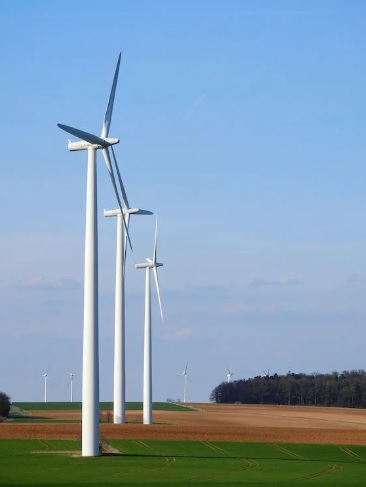
Following concerns about a proposed wind farm development, Tenaska officials are now weighing in on their hopes and approach to working with landowners and communities with fresh perspective on their development exploration in White and Hamilton Counties. Tenaska’s project manager for this particular development, Kyle Gerking, says, “Tenaska and Cordelio, two energy companies experienced in wind development, are considering development of a wind farm in the area. The area has several of the key aspects that are necessary to enable the development of renewable energy projects like this one, including access to the high-voltage transmission system, constructible land, and strong customer demand. Right now, we are starting discussions with local landowners about voluntary participation in such a project. Our initial discussions with landowners have been promising.” Gerking didn’t comment on the total acreage his company is looking at. White County Farm Bureau Manager Doug Anderson says he’s heard it’s 50,000 acres in White County alone.
Gerking disagrees with the assertion that wind turbines need 30+ feet of concrete in the ground to anchor the devices. He says, “Wind farms have a relatively large footprint; however, the area taken out of production by the infrastructure in relation to the overall footprint is small. A wind turbine and the associated access road constructed on a landowner’s property typically takes up only two-thirds of an acre. This makes wind farms an attractive supplemental income stream to landowners and agricultural communities. Wind turbines are typically supported by relatively shallow spread foundations with embedment depths of approximately 10-12 feet”.
Additional concerns were identified by a local energy attorney. Matthew McArthy says, “My biggest concern is that White and Hamilton Counties do not have enough consistent wind to make wind turbines economical which could result in these large eyesores being abandoned after they are built. We also have so many areas where coal has been mined for which wind turbines should not be built over. Some of these are very old mines and it seems they are unaware of their existence when leasing.” On that topic, Gerking says, “The historic mining and oil and gas production in this area were identified during the team’s comprehensive effort to identify this development opportunity. Our team has experience developing wind projects in other areas where these activities have occurred, and we are confident that a wind project can safely coexist with the former and current land uses in this area.”
The one thing Gerking and those concerned about the feasibility/ramifications of a wind farm agree on is that lease option agreements should be looked over by an attorney. The Tenaska representative adds, “Option agreements for a wind farm can be complex, and we encourage interested landowners to have the agreements reviewed by attorneys experienced with renewable energy leases. We have attempted to put forward a lease agreement that strikes the right balance between the interests of the landowners and the wind project. Landowners interested in learning more about leasing opportunities can contact Erik Larson ([email protected] or (970) 699-8079).”
When it comes to the future of the project, Gerking says, “Once we’ve been able to determine that there are enough willing landowners, we will perform various engineering and technical assessments and environmental studies to ensure turbines are sited in appropriate locations. One of the first assessments will involve deploying equipment to validate the local wind resource. Our goal is to develop a project that is safe and environmentally responsible.
Wind power is one of the most cost-effective means of generating electricity. As turbine technology has evolved and advanced, wind power can be generated in parts of the country that previously were less ideal due to wind speeds and related factors. We believe today’s technology is conducive to developing wind in southern Illinois. At the same time, there is continued demand for renewables generation from utilities and large power users.
Development of a wind farm typically takes 4 years or more. As our plans advance, we will be able to share more information with local leaders, landowners and the community. Tenaska and Cordelio strive to be good business neighbors, and our intent is to open a local office and hire a local representative to ensure access to information about the project.
Later in development, the project will work with local leaders on a road use agreement and a decommissioning plan, both of which would protect the county from costs related to those aspects of the wind farm. We also would talk with first responders about safety and security plans.
We believe this project could bring substantial benefits to the area, including an additional income stream for participating landowners, an increase in tax revenue and additional economic activity during construction of the project through hiring of local craft workers and contracting with local businesses to provide goods and services.”
You can learn more about Tenaska and specifically their wind projects at https://renewables.tenaska.com/wind/
Find our story with Anderson and McArthy specifically at https://www.wrul.com/local-news/farm-bureau-and-local-attorney-urge-diligence-surrounding-purported-wind-farm-in-hamilton-white-counties











